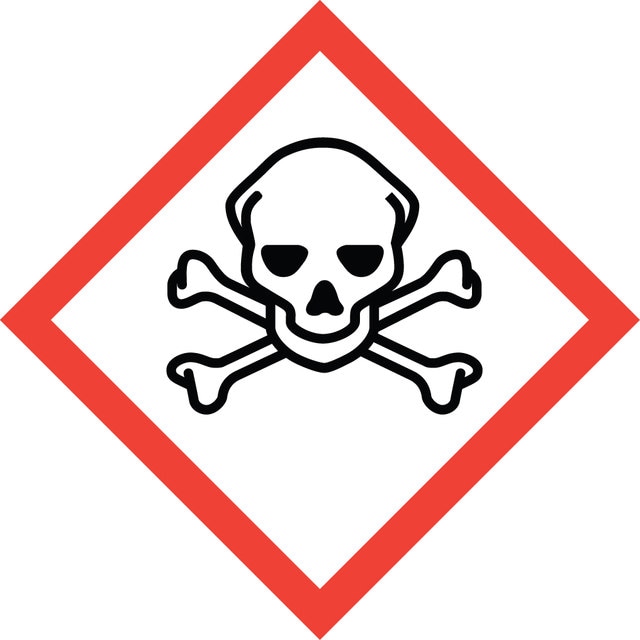Sign Into View Organizational & Contract Pricing
Select a Size
About This Item
Empirical Formula (Hill Notation):
C12H8N2 · HCl · H2O
CAS Number:
Molecular Weight:
234.68
Beilstein:
4007967
EC Number:
MDL number:
UNSPSC Code:
12352100
PubChem Substance ID:
NACRES:
NA.22
Quality Level
Assay
≥99.5% (titration)
form
solid
mp
224-225 °C (lit.)
SMILES string
O.Cl.c1cnc2c(c1)ccc3cccnc23
InChI
1S/C12H8N2.ClH.H2O/c1-3-9-5-6-10-4-2-8-14-12(10)11(9)13-7-1;;/h1-8H;1H;1H2
InChI key
NDLHUHRGAIHALB-UHFFFAOYSA-N
Looking for similar products? Visit Product Comparison Guide
Related Categories
Application
1,10-Phenanthroline hydrochloride monohydrate can be utilized as a precursor for the synthesis of:
- 3-bromo-1,10-phenanthroline and 3,8-dibromo-1,10-phenanthroline by treating with bromine.
- Copper phenanthroline complex by reacting with isonitrosothiazolylbenzothiazolylmethanide.
Signal Word
Danger
Hazard Statements
Precautionary Statements
Hazard Classifications
Acute Tox. 3 Oral - Aquatic Acute 1 - Aquatic Chronic 1
Storage Class Code
6.1C - Combustible acute toxic Cat.3 / toxic compounds or compounds which causing chronic effects
WGK
WGK 3
Flash Point(F)
Not applicable
Flash Point(C)
Not applicable
Personal Protective Equipment
dust mask type N95 (US), Eyeshields, Gloves
Choose from one of the most recent versions:
Already Own This Product?
Find documentation for the products that you have recently purchased in the Document Library.
The Phenomenon of Intramolecular Attractive S-O Interactions: Synthesis and Structure of (1, 10-Phenanthroline) copper (II) Complexes with Isonitroso-(4-methylthiazol-2-yl) acetamide and Isonitroso-(4-methylthiazol-2-yl)-(benzothiazol-2-yl) methanide
Domasevitch KV, et al.
Zeitschrift fur Naturforschung B, 52(3), 323-330 (1997)
Simple one-step synthesis of 3-bromo-and 3, 8-dibromo-1, 10-phenanthroline: fundamental building blocks in the design of metal chelates
Tzalis D, et al.
Tetrahedron Letters, 36(20), 3489-3490 (1995)
Novel oral phosphate binder with nanocrystalline maghemite-phosphate binding capacity and pH effect.
T M-H Nguyen et al.
International journal of pharmaceutics, 482(1-2), 21-26 (2014-12-03)
Hyperphosphatemia is one of the main risk factors contributing to morbidity and mortality in patients with end stage renal disease. The demand for a new phosphate binder is continuously increasing since the number of patients suffering under hyperphosphatemia is growing.
Our team of scientists has experience in all areas of research including Life Science, Material Science, Chemical Synthesis, Chromatography, Analytical and many others.
Contact Technical Service
